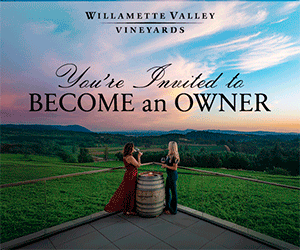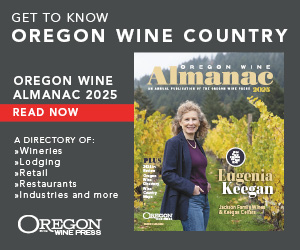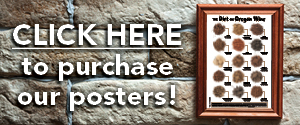Butterfly Effect
Oregon winery helps save native insect from extinction
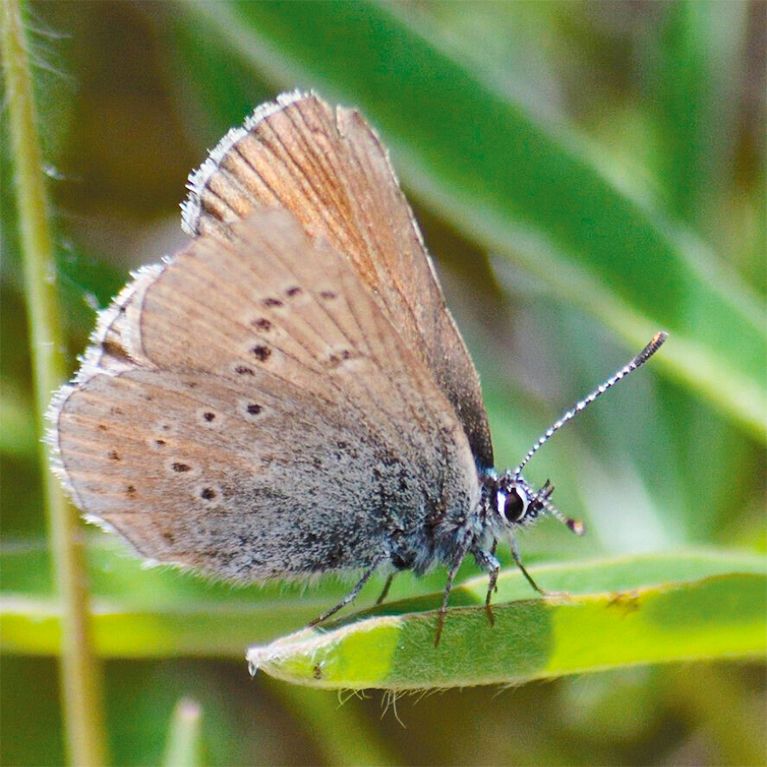
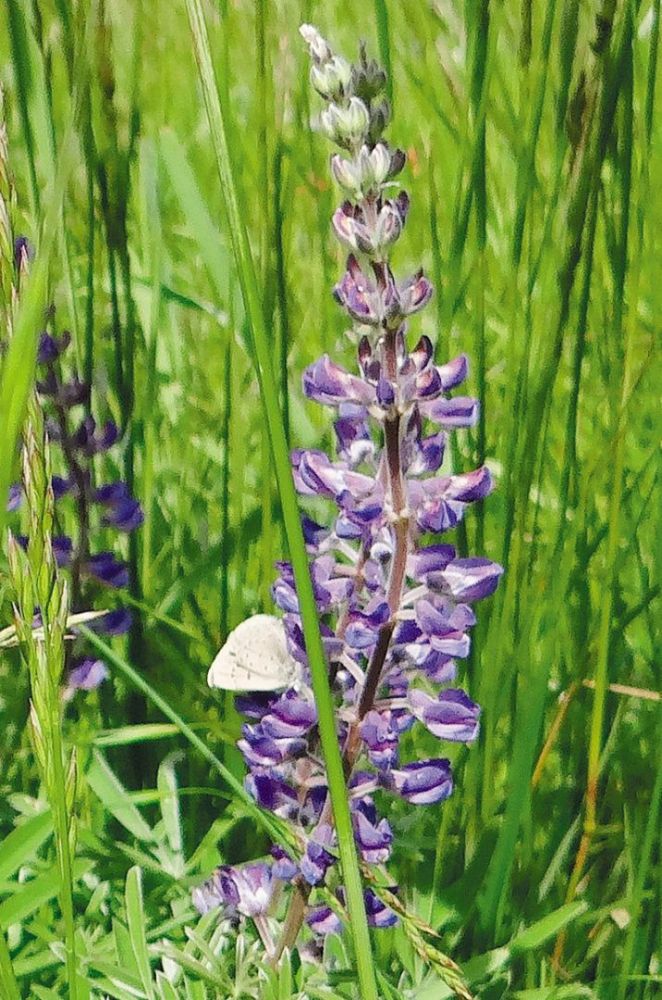
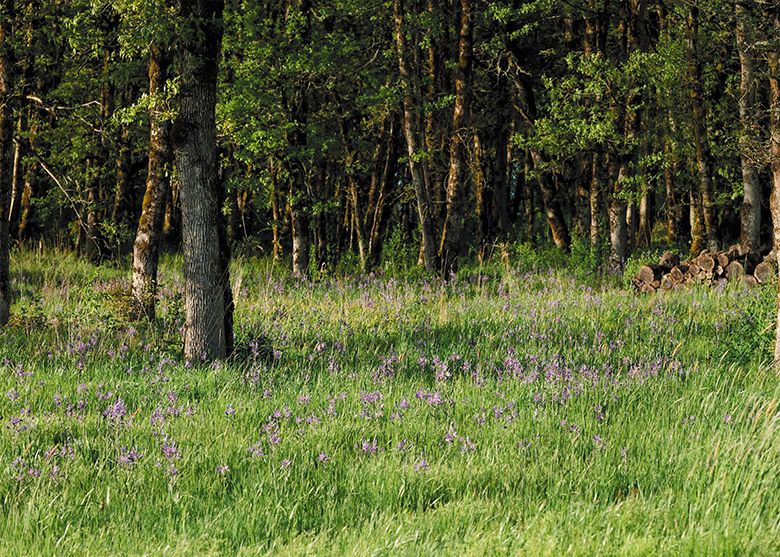
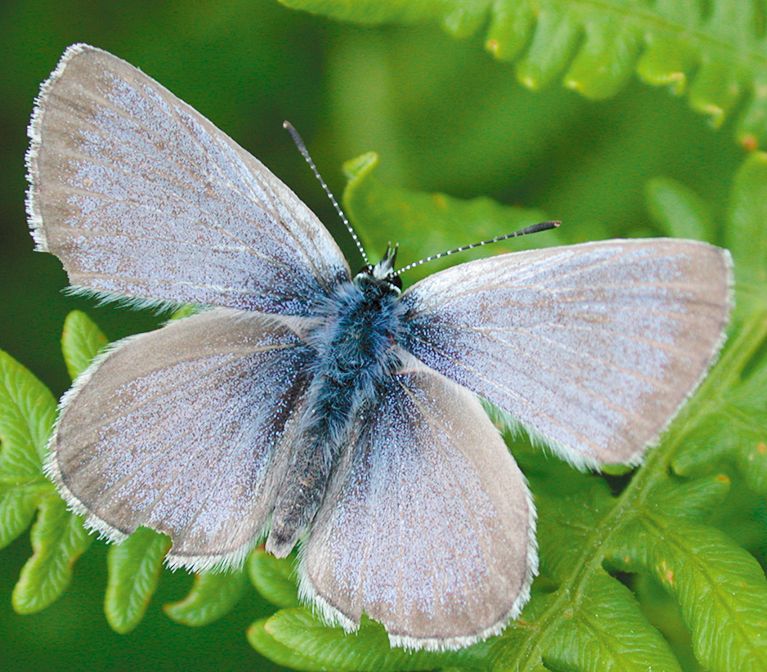
By Patty Mamula
Oregon’s wineries lead in restoring natural habitats while promoting sustainable practices. Van Duzer Vineyards gained distinction when it created specialized habitat havens to attract the Fender’s blue butterfly, helping save it from extinction.
Van Duzer’s role in this story began in 2009. Its 82-acre West Salem property lies adjacent to the Baskett Slough National Refuge (nearly 2,500 acres of forest and prairies) and several local farms. Bruce Sonnen, Van Duzer’s property manager, explained how the geography drew the interest of U.S. Fish and Wildlife Service.
One nearby farmer, participating in the USDA Conservation Reserve Program, had allowed the land to return to nature, letting wild grasses and trees grow. The discovery of a few Fender’s blue butterflies in this area encouraged U.S. Fish and Wildlife to secure a $35 million restoration grant.
Van Duzer signed a voluntary good neighbor landowner agreement to assist in restoring the butterflies. With this agreement, U.S. Fish and Wildlife personnel began working to restore a nine-acre prairie habitat on Van Duzer’s property. Invasive plants, such as blackberries, Scotch broom, and grasses, were removed, and a variety of herbaceous flowering forbs were planted. These are wildflowers: goldenrod, gentian, fireweed, forget-me-not, larkspur, lupine, monkshood, poppies and violets. The forbs also attract the Fender’s blue butterfly.
The restoration work also promoted growth of Kincaid, spur and sickle keeled lupine, where the butterfly lays its eggs.
The life cycle of the Fender’s blue is brief. Sonnen said, “Sometime in mid-May when the temperatures are consistently in the 70s, the butterflies start flying around for about a month.” During that time, they lay eggs on the leaves of the Kincaid lupine. The larvae hatch and feed until early July, when they drop to the base of the plant, entering diapause or hibernation. The larvae emerge the following spring, transform into pupas and finally, butterflies. The cycle continues as they take flight and lay eggs.
Over the years, Sonnen and his crew faithfully continued habitat restoration, hoping the butterfly would make an appearance. Finally– in 2014– their efforts were rewarded. Several Fish and Wildlife staff were netting butterflies when “suddenly they realized they had one. We named her Eve. We realized she was a pregnant female because of her large abdomen. Cameras started clicking. We ended up with nearly 170 photos. You would have thought these guys were taking baby pictures,” Sonnen said.
The small butterfly has a wingspan of about an inch. “They are the size of your thumbnail,” said Sonnen. Males have iridescent sky-blue wings and females rusty brown. “They also have two black lines on their wings,” said Sonnen, “distinguishing them from silver butterflies.”
The Fender’s blue species was first documented in the 1920s. Biologist Ralph Macy named the butterfly after his friend, Kenneth Fender, an entomologist local to the Willamette Valley.
After discovering Eve, two more Fender’s blue butterflies were documented at Van Duzer the next year, four in 2016, followed by 16 in 2017. While biologists continue visiting the property each spring, the population has increased enough for extrapolated, not individual, counts.
Recently, the Fender’s blue butterfly was reclassified as “threatened,” and no longer considered endangered. “It is the first insect to be de-listed from the endangered list,” said Angela Gargano, founder and marketing consultant with Fresh Take Creative.
Along the way, Sonnen has introduced other landscaping practices to improve native habitat. “I found a herdsman who brings his sheep onto the property and sets up fencing to enable focused grazing,” said Sonnen. “Each summer a herd of 120- 150 ewes visit Van Duzer for ‘flash grazing.’ It reduces mowing and the use of diesel fuel while keeping the fields healthy.”
The sheep graze on the upland prairie habitat for about three weeks before moving to the shadier 12-acre oak savanna for another four to five weeks.
He explained how the herdsman refers to the time his sheep are at Van Duzer as being on “an Atkins diet. The mother ewes have finished nursing their lambs and need slimming down. They eat dry forage including grasses, blackberries and Scotch broom. The food value isn’t the greatest,” Sonnen said.
Initially, Fish and Wildlife wanted to separate the sheep from the areas planted with lupine and forbs flowers. Over time, they realized the animals didn’t affect the lupine. In fact, the grassy areas vastly improved after the invasive plants were eaten and the resulting poop left behind.
The land restoration efforts have resulted in other benefits. Keeping invasives out of the oak habitat has led to the return of acorn woodpeckers. “Now when the acorns fall, the birds can find them,” said Sonnen. “We have about five breeding pairs here.”
The restored prairie area has increased numbers of Western bluebirds and Oregon vesper sparrows, which build nests directly on the ground. Here, too, the sheep have proven their worth. One spring, while walking the property with Fish and Wildlife staff, grazing sheep deliberately avoided a small grass plume. Suddenly, a bird popped up from it. The researchers realized the sheep knew it housed a sparrow’s nest and wouldn’t disturb it. “This shows how resilient our ecosystems are,” said Sonnen.
“Though the butterfly is thriving on parts of the property not directly producing grapes, improving our estate has benefits that tie back to the wine,” said Van Duzer’s winemaker Eric Misiewicz. “Better stewardship leads to healthier grapes and superior wine.”
Van Duzer hosts guided hikes and wine-tasting experiences where guests can visit the vineyard blocks and prairie habitat of the Fender’s blue butterfly. “We walk up and down the hills on the perimeter of the restored area,” said Sonnen. Some lucky visitors might even catch a glimpse of the little butterfly. Sign up at vanduzervineyards.com.
While butterfly populations decrease nationwide, Van Duzer Vineyard’s contribution to saving the Fender’s blue from extinction is cause for celebration.
Taste the Corridor
The Van Duzer Corridor American Viticultural Area, or AVA, values its farming roots and sustainable practices. It currently has 18 commercial vineyards, along with six tasting rooms.
On May 3, the region wines will showcase its wines during their Taste the Corridor event, hosted by Van Duzer Vineyards, from 5 to 8 p.m. Guests will enjoy light bites served with two wines from each winery. Cost is $45 per person. Purchase your tickets at vanduzervineyards.com/product/taste-the-corridor-2025.
Participating AVA wineries include Andante Vineyard, Johan Vineyards, Left Coast Estate, Namaste Vineyards, Van Duzer Vineyards and Wetzel Estate Winery, joined by Bjornson Vineyard, Cynthian Vineyards, Havlin Vineyard and Holmes Gap Vineyard.
Patty Mamula is a Portland-based freelance writer focusing on Northwest art, entertainment and culture. Her résumé includes Sunriver Magazine, The Capital Press and other publications. Connect with her at pattymamula@gmail.com.



